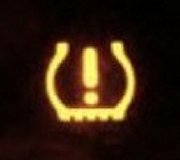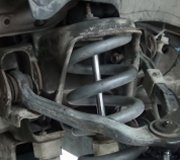I've never seen a spec listed for steering axis inclination. It is not exactly an adjustable angle. Typically you'll find it's around 26 to 32 degrees but what is critical is both sides must be the same within 0.2 degrees. If there's a big difference you will have miserable and tiring handling. The car will dart from side to side when you go over bumps or dips in the road. That is a huge problem on GM front-wheel-drive cars after the cross member has been lowered to remove the engine or transmission because it can be reinstalled off-center. Other vehicles like Chrysler products use special bolts that center the cross member to avoid that. If your SAI readings are too much different from each other, that is corrected by loosening and shifting the cross member, (if it's not welded) or by replacing bent parts.
Caster has a big effect on pull on rear-wheel-drive cars but practically no effect on front-wheel-drive cars so it isn't even adjustable on most models. The main thing is it needs to be close to identical on both sides but I've had them as high as 3.0 degrees different and there was no pull and the car drove fine. (3.0 degrees difference on a rear-wheel-drive car would make your arms tired in a few miles holding onto the steering wheel to keep it going straight). When caster is not adjustable there will still be specs given for reference. If it's off a lot either the car was crashed and something is bent, the mechanic selected the wrong car model on the list on the computer, or the specs are wrong. Five degrees off of specs is a real lot so I'm wondering what they called for. Most cars and trucks call for around 3.0 degrees caster. As you get closer to 0.0 degrees the steering will become easier but there will be more steering wander. Big heavy cars and trucks from the mid '60s and older had negative caster to make the steering real easy with manual steering. They had a lot of wander but we didn't drive so fast back then. Higher caster makes for more stability at higher speeds, and less wander so it is less tiring to drive, but it's much harder to turn the steering wheel so we added power steering to make up for that.
By the time you get to around five degrees caster the steering is going to get pretty hard. There are some exceptions that are designed to need up to 11 degrees caster. Most notably that includes some Mercedes and some Jeeps.
The included angle is just the sum of SAI and camber so if SAI is off included angle will be too. I'm surprised that even showed up on the printout. It can be a diagnostic measurement but on the printout it only serves to cause undue concern. Here again there is usually no spec given. All that's important is both sides are nearly the same.
Be aware too that it is customary to make the left camber a fuzz higher than the right side to create a tiny pull to the left to offset road crown. That pull can also be accomplished by making the left caster a little lower than the right side on rear-wheel-drive cars. Caster has half the affect on pull as camber. Typically you need roughly.05 to.10 degrees more camber on the left on front-wheel-drive cars. Rear-wheel-drive cars often call for or need as much as 1/4 degree more camber on the left OR 1/2 degree less caster on the left.
You'll notice I switched from decimal numbers that read to the hundredth of a degree to fractional numbers. We didn't have alignment computers in the '80s when rear-wheel-drive cars were most common. Making adjustments to the nearest 1/8 degree was more than sufficient for good tire wear and no pull. Now, on front-wheel-drive cars we need to be much more precise. Some cars were built so cheaply they didn't even have camber adjustments and their entire steering and suspension systems were total embarrassments to the industry. I'm talking about the Ford disasters. Some cars were somewhat forgiving and it took little effort to keep them going straight that most owners didn't even notice a little pull. I had the best luck with Chrysler products. Camber was easily adjustable, and if I set them to exactly.06 degrees more camber on the left I knew I would not have a complaint of a pull. Those were real easy to set precisely.
Monday, May 27th, 2013 AT 9:44 PM


